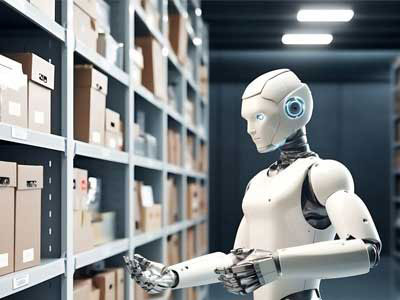Key Takeaway
The social impact of widespread robotic adoption is significant. Robots can take over low-paying, less desirable jobs, which can lead to job displacement for many workers. This shift can cause anxiety and stress among employees and managers. On the positive side, robots can perform dangerous or repetitive tasks, improving workplace safety and efficiency. However, the reliance on robots may also reduce human interaction and create a need for new skills. Overall, the impact on society includes both opportunities and challenges as industries adapt to automation.
Changes in Workforce Dynamics
Changes in workforce dynamics are increasingly shaped by technological advancements and evolving workplace preferences. Remote work has become more prevalent, impacting traditional office setups. Flexible schedules and hybrid models are gaining popularity, accommodating diverse employee needs. Automation and AI are reshaping job roles, emphasizing digital skills. Moreover, a growing focus on employee well-being and mental health is influencing organizational strategies. These shifts highlight a pivotal transition towards more adaptive and inclusive work environments.

Economic Implications
Robotics adoption has profound economic implications. On one hand, it has significantly boosted productivity and efficiency, leading to increased output and reduced costs. Businesses can now produce goods faster and with more precision, which can result in lower prices for consumers. This efficiency also allows companies to allocate resources more effectively, fostering innovation and competitive advantage. However, the initial investment in robotic systems can be substantial, posing a barrier for smaller enterprises that may struggle to afford these advanced technologies. Over time, though, the cost-benefit ratio generally favors investment as operational savings and increased output compensate for initial expenses.
Additionally, the shift towards automation can exacerbate economic inequality if not managed properly. Those without the necessary skills to operate and maintain robotic systems may find it challenging to secure employment, leading to a disparity in job opportunities. Proper policies and training programs are essential to mitigate this risk. Governments and industries must collaborate to provide retraining and upskilling opportunities, ensuring that the workforce can transition smoothly into roles that complement robotic systems. By doing so, the economic benefits of robotics can be widely shared, leading to overall economic growth and improved living standards, benefitting both businesses and the broader community.
Ethical Considerations
The rise of robotics brings several ethical considerations to the forefront. One major concern is job displacement and the moral responsibility of companies to support displaced workers. As automation takes over repetitive tasks, companies must ensure they provide adequate support for employees transitioning to new roles. This could involve retraining programs, job placement services, or even financial support during the transition period. Another ethical issue involves the decision-making capabilities of robots, especially in critical areas like healthcare and law enforcement, where the consequences of errors can be significant.
Ensuring that robots operate within ethical boundaries and make unbiased decisions is crucial. This requires robust regulatory frameworks and ethical guidelines that dictate how robots should be programmed and utilized. Privacy is another significant concern, as robots equipped with advanced sensors and data collection capabilities could infringe on individual privacy rights. To address these issues, continuous dialogue among stakeholders, including technologists, ethicists, policymakers, and the public, is essential. This collaboration ensures that the development and deployment of robotic technologies benefit society as a whole while minimizing potential harm.
Public Perception and Acceptance
Public perception and acceptance of robotics play a critical role in their successful integration into society. While some people view robots with suspicion and fear, largely due to misconceptions and lack of information, others see them as a boon that can improve the quality of life. Education and transparent communication are key to shaping public opinion positively. By providing clear and accurate information about the benefits of robotics, such as their ability to perform dangerous tasks, assist in healthcare, and enhance productivity, we can help mitigate fears and build trust.
Moreover, involving the public in discussions about the development and deployment of robotic technologies can foster a sense of inclusion and trust. Public forums, educational campaigns, and community engagement initiatives can provide platforms for people to voice their concerns and learn more about robotics. This inclusive approach ensures that the public feels a part of the technological evolution and can contribute to its direction. Ultimately, gaining public acceptance is crucial for the widespread adoption of robotics and realizing their full potential to enhance human life.
Future Social Trends
Looking ahead, the social trends shaped by robotics are likely to be transformative. We can expect an increase in human-robot collaboration, where robots and humans work together seamlessly. This collaboration will extend beyond industrial applications to homes, healthcare, and public services. For instance, robots could assist with household chores, provide companionship for the elderly, or even perform complex medical procedures under human supervision. These advancements will require society to adapt and embrace new ways of interacting with technology.
Education will also see significant changes, with a greater emphasis on STEM (Science, Technology, Engineering, and Mathematics) fields to prepare the future workforce. Schools and universities will need to adapt their curricula to include robotics and automation, ensuring that students are equipped with the necessary skills for the evolving job market. Socially, robots could become an integral part of our daily lives, enhancing our quality of life and enabling us to focus on more creative and fulfilling activities. However, it is crucial to monitor these trends to ensure they lead to inclusive and equitable outcomes for all members of society, promoting a future where technology benefits everyone.
Conclusion
Robotics profoundly impacts society by revolutionizing industries, enhancing healthcare precision, and advancing education through interactive learning. Automation in manufacturing boosts efficiency, while surgical robots improve patient outcomes. Educational robotics fosters STEM skills early, preparing future innovators. However, ethical concerns about job displacement and data security loom. Balancing innovation with societal well-being remains crucial in harnessing robotics’ full potential.
